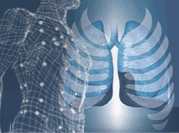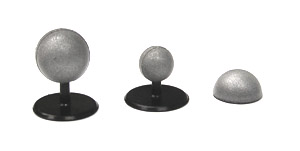

 OEP System, with the use of advanced algorithms, also measures the different compartments of the chest wall, provides the continuous monitoring of all ventilatory parameters (tidal volume, frequency inspiratory and expiratory times, etc.) and allows to track end-expiratory and end-inspiratory lung volume variations on a breath-by-breath basis. OEP System does not require the use of a mouthpiece or any other physical connection to the patient. Patientís active participation is not required, making it suitable for the use in Intensive Care Units, when the patient is under anesthesia, during sleep, or when the patient is an infant. It is also suitable for prolonged measurements and the calibration of the system is not subject-specific and does not require the execution of any maneuver by the subject. OEP System can be combined with any other measurement, such as flow, pressures, gases concentration, EMG, ultrasonography, haemodynamics, sound, etc. For instance, the combination with esophageal and gastric pressure makes it possible to study the dynamics and energetics of respiratory muscles. It can be carried out in different positions (sitting, standing, supine, prone) and applied during situations like rest, exercise, sleep, mechanical ventilation, functional electrical stimulation, phonation, singing and forced oscillation.
|
 OEP System measures the volume of the chest wall and its
variation during breathing, using reflective and non invasive markers
attached to the thoraco-abdominal skin by biadhesive hypoallergenic
tape. The three-dimensional positions of the markers are obtained
thanks to infrared light video cameras with flashing LEDís.
OEP System measures the volume of the chest wall and its
variation during breathing, using reflective and non invasive markers
attached to the thoraco-abdominal skin by biadhesive hypoallergenic
tape. The three-dimensional positions of the markers are obtained
thanks to infrared light video cameras with flashing LEDís.